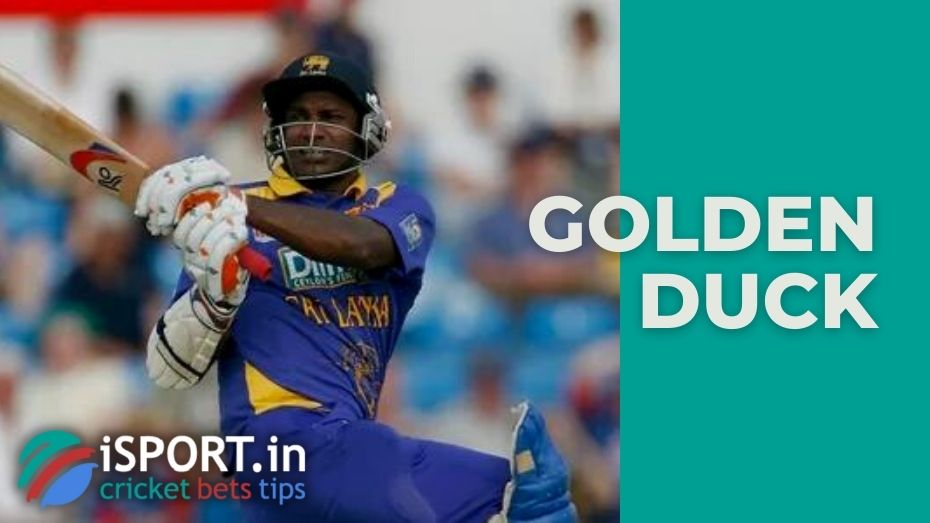Golden Duck

A cricket player’s game might be termed a failure at some point due to the fact that they not only have brilliant moments in their performances but also make blunders that are completely out of the ordinary. The game does not proceed according to plan when a cricket player joins the batting position, which is an interesting phenomenon since a cricket player might be a brilliant bowler and even a famous bowler.
Golden Duck in Cricket: Definition of the Term
A brief explanation of the word golden duck in cricket is going to be provided to you in this article. During the broadcast, when this statement comes next to a batsman’s name, it is likely to be one of the most humiliating moments in their whole lives.
The meaning of the word will be explained and we will also provide you with information on five cricket players who have amassed a significant number of golden ducks over their careers. These players have excelled in a variety of positions.
There are several different types of duck in cricket, and they all have their definitions. Now we will tell you about one of the most common – golden duck.
The golden duck in cricket is the moment in cricket when the batsman is out of the game after the first ball. The batsman does not have time to earn a single run and leaves the field with a zero score.
The history of the creation of this phrase is something that we should go into a little bit. Who precisely is this “duck”? In point of fact, the origin is rather straightforward: in cricket, the term “duck” often refers to a score of zero. And the number “zero” is somewhat comparable to a duck egg. The origin of this phrase for assessing the game may be traced back to this point. It is possible to find anything comparable in baseball, however the term “goose-egg” is used in the slang language.
Golden Duck in Cricket: 5 Players With Many Golden Ducks
In this section of the essay, we will examine the five athletes who have the most golden duck in cricket records (at least at the time of this writing). The existence of a big number of golden ducks does not prevent an individual from achieving exceptional performance in other positions or from being one of the best in their profession. On the other hand, you should not be shocked to see that this list will contain the names of renowned and legendary cricket players.
Sanath Jayasuriya
Sanath Jayasuriya, a former player of Sri Lanka, is ranked fifth in the number of golden ducks (9), according to HowSTAT. Muttiah Muralitharan, on the other hand, has the same amount of golden ducks. It is important to note that receiving such a large number of golden ducks in cricket did not prevent the athlete from becoming a star in the sport of cricket and from achieving a significant number of records within the sport. When it comes to One Day International cricket, for instance, he is the only player in the history of the sport to have scored more than 10,000 runs and taken more than 300 wickets in his career.
As an all-rounder and an opening batsman, Sanath Jayasuriya is responsible for his duties on the field. In addition to making a significant contribution to the growth of professional cricket in Sri Lanka, he was responsible for a great deal of success for his side. In addition to that, he served as the captain of the Sri Lanka national squad.

Moin Khan
There are ten golden ducks that can be attributed to Moin Khan, a former cricketer from Pakistan, according to the statistics. Throughout his career, the athlete made more than 100 catches in test cricket and more than 200 catches in one-day international cricket. It is important to note that the athlete mostly performed in the position of wicket-keeper throughout the course of his career.

Wasim Akram
According to the same HowSTAT service, former Pakistani cricketer Wasim Akram has 10 golden ducks on his account. At the same time, the Pakistani is known worldwide as a cool left-arm fast bowler. He was even given a nickname “King of Reverse Swing”. In addition, Wasim Akram became the first bowler in the world to reach the 500 wicket ODI cricket mark during the 2003 World Cup.

It was notably useful for the athlete to perform well against spin spinners while he was in the batting position. However, he was still able to produce more favorable outcomes while he was playing the role of a bowler.
